|
Last week I was fortunate enough to visit the exhibition 'The embroidered Heaven' at the Church Heritage Museum in Vilnius, Lithuania. I also met with Lithuanian embroideress Agne Zemkajute. Discussing pieces in the exhibition with a kindred soul is pure bliss! And Agne proved to be a very knowledgeable guide and fellow cake eater :). As we both have a love of church textiles and love to recreate them, this was certainly not the last time we have met. For those of you not living within two hours flying time from Vilnius, I will try to pack this blog post as full as I can with impressions of the exhibition. And at the end of this lengthy post, I will pass on details of the lovely catalogue produced by the museum. The exhibits were displayed chronologically from the Late Medieval period until the 20th century. Due to the fact that the Lithuanians were the last peoples in Europe to convert to Christianity in AD 1387, there aren't any really old vestments. And Lithuania's turbulent recent history with 100 years of Tsarist rule, two World Wars and the Soviet Occupation, didn't help in the preservation of what once has been there either. Nevertheless, there were two chasubles and a cope hood on display which dated to the Late Medieval period. One of the Late Medieval chasubles was 'restored' using paint. Its iconography of saints sitting under an architectural arch is well-known from many other embroidered vestments and paintings dating to the same period. There were many more chasubles and related vestments on display dating to the 17th century. Contrary to earlier vestments who told a biblical story, vestments from the Baroque period feature large floral motives and an excessive use of gold threads. The height of the padding on some of these pieces is mind-boggling! These vestments were meant to dazzle you and to clearly show you who held power. Although I am not a fan of the Baroque period, I do admire the skill needed to produce these magnificent pieces of highly-padded goldwork embroidery. Today, this style of embroidery is still in use in the embroidery ateliers of Spain. One of the people teaching this type of embroidery and blogging about it, is Cristina Badillo. Playful 18th century Rococo with its elegant floral motives is much more my cup of tea. Especially the cope displayed above. Does this not remind you of Jacobean crewel work? However, this is made with silk and silver passing thread. I have never come across a piece like this and I would love to hear from my readers if they know of a comparable piece. Agne and I discussed the piece at length as we can't quite discern how the flowers have been stitched. In fact, we have so many questions about this piece that we will have no choice (how horrible!) than to try and recreate some of it. Just determining if it is best to stitch the silk before the metal threads or the other way around was just not possible from looking at the piece. We even took pictures if the blown-up detail pictures on display to get a grip on the stitching process... This chasuble from c. 1909 reminds me of the chasubles made by Leo Peters, a Dutch artist, around that time. It has an Art Nouveau feel to it. And the padding underneath the figure of Jesus and the cross is just amazingly thick. And I really liked this early 20th century piece as well. I don't remember seeing vestments using panels of needlepoint before. There is even some drawn-thread work in this one.
Apart from the many embroidered vestments on display in the exhibition, the museum also has a few vestments on permanent display. And, best of all, they have a large set of drawers on the organ gallery. Each drawer contains a vestment. They allow you to browse through them and have a good look at them without the hindrance of glass! Please note: the exhibition 'The embroidered Heaven' will end on the 15th of September 2018. However, the Church Heritage Museum sells a wonderful catalogue, hard-bound, and with full-page detailed pictures of all the vestments held by the museum. Although the regular text is in Lithuanian, there is an excellent summary in English in the back. The catalogue has 222 pages and costs only €15. You can contact the museum here.
12 Comments
As I told you in my last blog post, I rendezvoused with the medieval vestments at St. Paul im Lavanttal (Austria) last week. And what a delight it was! The weather was quite hot and thus perhaps not ideal for visiting a museum. This meant that I had the pieces to myself and could take as many pictures as I liked :). I had also brought a tiny bit of replica-stitching to compare with the original; more on that further down. Let me introduce you to the older chasuble housed at St. Paul Abbey. This chasuble dates to the reign of abbot Bertholdus who died in AD 1141. The piece is thus more than 875 years old!!! It never ceases to amaze me how well these vestments are preserved considering their age and the fragile materials they are made of. The chasuble displays scenes from the bible: seven from the New Testament and 16 from the Old Testament. These scenes are not just 'pretty' or an incidental record of certain biblical stories. Instead, the scenes from the Old testament have a theological relationship with those from the New Testament. For instance, the Annunciation is paired with the foretelling of the births of Samson and Izsak. Each of these scenes fits into a square. The scenes from the Old Testament have some writing in them as well. Perhaps while they were and are generally lesser known and/or harder to identify. Further towards the hem, 20 saints are displayed. These saints had a special relationship with the original Abbey of St. Blaise. Along the hem, 36 small roundels display, amongst others, the edifices of the twelve Apostles, St. Paul, prophets, evangelists and the founder of the Abbey: Holy Roman Emperor Otto I (AD 912-973). The priest wearing the chasuble was literally a walking theological learning aid :). And not for the 'common folk' as they would not generally attend mass in the Abbey church. Instead, the chasuble would remind the monks themselves of Christian theology and the lives of the saints. To separate each square, there are smaller squares with mostly geometrical patterns (there are birds and floral patterns displayed in the squares on the 'cross-roads'). And there are a lot of them! I have half-heartedly started to catalogue them and have already counted more than 25 different geometrical patterns. And it is one of these patterns that I started to replicate. At first I thought that the stitch used was closed herringbone. This is however not the case. A row of closed herringbone stitches produces two parallel lines of stitches on the back: back-stitch on the one and split stitch on the other. It was long hold that this was the stitch used on the chasuble. However, when I stitched my copy, I ended up with small gaps where two rows 'bud'. Upon checking the literature again, I saw that during the restauration of the piece it was found that the stitch used is in fact long-armed cross-stitch with a small compensating stitch at the start (diagram). I decided to stitch the same pattern again using DeVere 60-fold loose-twist silk on Zweigart Newcastle 40ct natural linen. And presto! No more gaps and the pattern became nice and square (it really is! pardon my photography). It is still at 41,5 mm a bit bigger than the original. This means that the linen background fabric used was finer than 40ct (!) and the silk too. What I further learned from my wee bit of replica-ing, is that the end-result becomes quite stiff. The bulk of the silk thread is on the front and adds quite a bit of weight to the finished piece.
In the future, I would like to try my hand at one of the non-geometrical scenes. After all, copying a geometrical pattern with what is in essence a geometrical stitch, is not a problem. However, I am in awe at the craftsmanship needed to execute curves and natural forms using rows of long-armed cross-stitch! To me, that makes stitching a scene from the Bayeux Tapestry (c. AD 1070) like a walk in the park :). Are you ready for another trip to beautiful Crete? This time we are going to visit the Monastery of Arkadi. This place is famous for one of the many tragedies which befell the island during Ottoman rule. In 1866, 943 Greeks, mainly women and children, had sought refuge at the Monastery. After three days of fierce battle with the Turks, they decided to rather kill themselves by igniting barrels of gunpowder, than to fell into the hands of the Turks. It is quite impressive to walk into the ruined gunpowder magazine. You can read more about the tragedy and the monastery's history here. Not mentioned anywhere, the monastery used to house a famous workshop for the embroidery of ecclesiastical textiles for the Greek Orthodox church! And these beauties have recently returned to Arkadi. Freshly conserved and beautifully presented. Officially, you are not allowed to take pictures. However, I explained to the guard that I am an embroideress myself and that I re-create historical vestments. It was then ok for me to take as many pictures as I liked! But first things first. The embroidered vestments of the Orthodox Church are very different from the ones we are used to in the West. We mainly have chasubles, copes and dalmatics, they have epigonation (rhomboid piece of luxurious material suspended from the waist at knee-level), epimanikia (detachable cuffs used to bind the wide sleeves of lower vestments), epitrachelion (stole), orarion (narrow band of cloth wound around the upper body of the deacon) and phaelonion (chasuble) with polos (medallion applique sewn onto other vestments). Yes, that's all Greek to me too :). Secondly, these vestments date to the 17th, 18th and 19th centuries. Thirdly, the monks who made them, signed their work. How amazing is that? The style of the embroideries and the techniques used, differ from Western European goldwork embroidery of the same period. But there are parallels. Especially the use of floral motives is seen in both traditions in this period. Apparently, the use of padding is also a Western influence as the Byzantine tradition does not make use of it. Apart from fine gold and silver threads, the embroiderers also used semi-precious stones and silk in their embroideries. Crimson silk was preferred for the background. Faces were stitched by appliqueing a lighter silk and subtly stitching facial features on top. Moni Arkadi is well worth a visit for embroidery enthusiasts! The embroideries are well displayed in good light and have excellent caption texts in Greek and English. Besides, there are larger texts on the recent conservation and style of the embroideries. And best of all: the museum shop sells a booklet on the matter! The booklet is in Greek, English and German and has pictures and descriptions of all the embroideries on display, with a basic introduction. Pictures are ok, but not always splendid and the booklet is a little outdated regarding the current display. However, it is a good booklet for reference and at €3,00 it won't break the bank for most of us. The title is: Drandakis, N.V., 2000: Ecclesiastical embroidery at the monastery of Arkadi, ISBN: 960-86722-0-1.
When I visited the Diözesanmuseum Brixen in Italy last year, I was captivated by one chasuble particularly. It wasn't particularly old or made with extraordinary skill. But to me, it just screamed: FUN to embroider. And I had seen this particular technique before on an unfinished sampler in the collection of the Wemyss School of Needlework in Scotland. The particular pieces were made with fibrant coloured silks in a simple couching technique (Bayeux Stitch) and seem to originally date to the 17th century. Then my internet search began. I proved not to be the first to write about 'Italian couching'. In 2007, Mary Corbet wrote an article about 'Italian Stitching' on her blog Needle 'n Thread. Through the related articles, I found the book Mary had originally consulted: Church Embroidery and Church Vestments by Lucy MacKrille written in 1939. You can download it for free here. If you like goldwork embroidery and embroiderying with silk, you'll love it! And what does it say on 'Italian Stitch'?: Italian stitch in which stout floss is used for a foundation is the most beautiful of stitches. The floss is stretched across the surface from end to end of the design, care being taken not to twist a fibre, so that when the surface is covered it will be as smooth as satin. The finest gold thread is then laid across the silk in lines one-eight of an inch apart and couched evenly. The beauty of this stitch depends on the glossy smoothness of the floss, the straightness of the lines of gold, and the evenness of the bricking or couching stitches (MacKrille, 1939 p. 27-28). Hmm, not my 'Italian Couching' after all. The examples I saw in the Museums in Northern Italy were al couched with matching silks, not with gold thread. Could it be that 'Italian Stitch' was actually an Anglo-American invention and not of true Italian origin? Let's check with Pauline Johnstone writing on Italian Embroidery in 'Needlework: an illustrated history' edited by Harriet Bridgeman and Elizabeth Drury from 1978. There it says: An alternative technique was laid and couched work in colored silks, crossed and held down by spaced lines of gold thread. ... Many vestments of this type are attributed to Napels, where the Kings of Napels and the Two Sicilies held a wealthy and lucurious court (Plate 45). (Johnstone, 1978, p. 143). So, what does Plate 45 show? Not much in a book from 1978. It is in colour, but a whole chasuble at only 10,2x9,3 cm, doesn't tell a whole lot. Luckily, this particular chasuble is held at the Victoria & Albert Museum in London. And they have a digital archive! You can find the entry for the chasuble featured in the 1978 book here. Lo and behold! This is indeed the needlework technique I have seen in a few pieces in Northern Italy and the unfinished sampler in Scotland. And as you can see, the laid silk is couched with a matching silk thread. Not with a gold thread.
So, can you see what happened here? An authority on 'modern-day' church embroidery from America, but who studied embroidery in England, wrote on a couching technique with silks and gold thread she had learned and used in 1939. Later researchers on Italian needlework presumed this was a historical technique used in 17th century Italy. They had a bad photograph from the V&A collection and a brief description naming floss silks and silver-gilt thread. Combining the two into a Bayeux stitch with silks and gold thread. Now don't get me wrong. The Itialian Stitch embroidery executed by both Lucy MacKrille and Mary Corbet looks absolutely stunning. But it does not seem to have been a historical needlework technique in use in 17th century Italy. However, if you have come across a historical piece made in Italy which does use gold thread as the couching, please do let me know! In the mean time, I'll keep my eyes peeled for more pieces in this fascinating technique. Yeah, I have re-surfaced after a nice long break over the holidays. And I have big plans for 2018. Actually, some were not only conceived during my lovely break, but put into action as well. So what have me and my husband been up to? For starters, we re-decorated my studio and changed its lay-out. We repainted the walls and ceiling in a pretty blue colour; like the egg of a blackbird. Then I put in a large set of map drawers. Perfect for thread storage, if you have the space for such a monster. This will save me so much time searching for the right threads. And it will hopefully prevent me from buying the same supplies twice... My clever husband installed a professional art gallery hanging and lighting system to display my framed embroideries beautifully. Of course not as easy to install as the instructions claimed, but a bit of swearing sometimes helps :). I am pleased as pie with the results: Next up: the checkout of my webshop. As not all people seem to like PayPal, I installed a few more payment options. You can now also use your credit card, Apple Pay and Android Pay through a Stripe interface. Unfortunately, my website host Weebly has not enabled SEPA or Ideal in its Stripe interface yet. I keep nagging them about it, so hopefully they will expand the interface in the future. I've also amended my opening hours. Since my doctor has strongly recommended that I take up swimming to prevent my shoulders and hips from becoming too painful to embroider, I duly dip in the pool three times a week. As the pool is not exactly next doors (and the lake in front of the house frozen over), it takes a few hours out of my working week. Luckily they have great water slides! My new opening hours are: Monday & Friday 13-17h and Tuesday & Saturday 9-17h. And what's in store for next year? I am planning to keep traveling to see more historic embroideries. There is so much out there! But unfortunately, little is known about it in the wider embroidery community. Not in the least due to language barriers and a false sense of national/regional pride and protectiveness. That's a real shame. My idea is to publish a few ebooks on specific historical embroidery techniques with references to places where you can study the originals. The ebooks will contain pattern drawings and step-by-step explanations so you can try your hand at it too. First up is Italian couching from the 17th century. In essence it is Bayeux stitch using silk instead of wool. After all, the Italians are not known for huge flocks of beautiful sheep :). But they were the first to produce silk in Europe.
That's all for now. Time for a cup of coffee, before digitising some more embroidery patterns. Have a nice week! Since St. Laurence was grilled to death, I thought the above a fitting blog post title. After almost two years of on and of working on this goldwork piece, St. Laurence can finally be revealed in all his glory. The piece is a near perfect copy of the orphrey held under catalogue number ABM t2107h at the Museum Catharijneconvent, Utrecht in the Netherlands. The original orphrey was made between AD 1520-1525 and measures c. 28.5 x 17 cm. I have covered this project in earlier blog posts too, in case you'll want to read the whole story. Above on the left the original museum piece and on the right my version. However, last time you saw the piece, I was still working on the background. So let's explore how I assembled all the different pieces. Apart from the background and St. Laurence, I also worked both columns and the ceiling keystone on the same Zweigart 40ct natural linen. I worked his bbq separately in a small embroidery hoop on a piece of calico. It is in essence a wired slip filled with silver plated Japanese Thread #8. Cutting away the calico between the bars, was challenging! So I used a dark brown textile paint marker to stain the remaining calico fibres. Then it was time to cut out St. Laurence, the keystone and both columns. I took the whole piece of the slate frame and redressed it only with the background. As you can see in the picture above, I cut the other items out with a bit of a seam allowance. I folded the seam under and laced the back. This worked particularly well for the straight columns. It was less successful for the keystone and proved impossible for St. Laurence himself. So...., I used conservation glue. And it worked a treat! Since you only want the seam to stay put as long as you are appliqueing, you don't need huge amounts of glue, i.e. you are not soaking your embroidered fabric. Before I attached any of the elements, I made sure my fabric wasn't drum taut. I started with the keystone, then did the left-hand column, then St. Laurence and then the right-hand column. Although I worked my background a little further than needed so it would go under St. Laurence, the fit wasn't perfect on all sides. I figure this is due to the whole piece being worked on a drum taut slate frame and once you release this tension completely, your elements shrink a bit. Note to self: work the background more generously on the next piece! Appliqueing the elements onto the background was rather straight forward. As you can see in the above picture, I pinned the element in place and then couched around the edge with matching silks. Only for the columns, I used a different method. I noted that my long vertical rows of tightly packed Japanese thread gaped when couched down at the edges. Instead, I sew in a straight line between the last and the before last row of Japanese thread. With all elements couched down, it was time to add the dark brown edging around all the elements. It adds a sense of depth to an otherwise near flat piece of embroidery. I used four to six strands of a dark brown silk perle. They were offcuts from a weaving project by a fellow local artisan. Don't you love it when you can recycle things?! My original plan was to mount the goldwork first and then applique it onto the green chasuble fabric. This would support the heavy gold embroidery better. However, I didn't like it one bit. The embroidery was too high up from the fabric for my taste. As I have worked this piece mainly during demonstrations, it did mean that I hadn't been as accurate as I would have wished. The piece is 1,5 linen threads too high on the top left and 1,5 threads too short on the lower right side. This happens when you chat to people and/or work in improper light. No worries, I can perfectly live with these minor discrepancies! However, it did mean that my initial mounting had to go. I ended up cutting out the whole orphrey with a seam allowance and couching it in place directly onto the green chasuble fabric. It worked a treat! As it should have done, since my medieval counterparts did it the same way. With the orphrey in place, I couched a gilt Twist #3 and a large gilt Roccoco around the edge to hide most of the linen background fabric. Today I mounted the whole piece and weather permitting, will bring it to the framer's tomorrow.
Working on this project certainly had its challenges, but I loved it immensely! During demonstrations and through this blog people from all over the world were able to follow the process. I will certainly make another one in the future! But for now, I can't stop looking at my achievement and enjoy this splendid piece :). As part of the 'Samt und Seide 1000-1914. Eine Reise durch das Historische Tirol' (Velvet and Silk 1000-1914. A trip through historical Tyrol) exhibitions organised by the European Textile Academy, I and my husband visited Brixen/Bressanone and Klausen/Chiusa. We were completely blown away with the high quality embroidered textiles we saw and are already planning two more trips. Unfortunately, for most of you, Northern Italy is a bit further away than our three-hour drive. However, if you are ever in the neighbourhood, do visit the two museums I am going to introduce you to further below! They are absolutely worth it. And do take a print-out of this blog with you if you are not proficient in either German or Italian, as English is not the lingua franca in Northern Italy... First up is the Diözesanmuseum in Brixen. It houses the cathedral treasure of the former Diocese of Brixen. A large part of their permanent exhibition is devoted to textiles. The oldest being from around 1000 AD! However, this museum follows the modern concept of presenting historical art as art. Descriptions of the individual objects are very meagre and only available in German and Italian. There is nothing wrong with appreciating pieces as they are and enjoying the display in front of you. However, I would have liked to have the option of getting more information. Preferably as laminated information available in the display room AND a decent catalogue to take home. After all, I like to go to museums to learn and broaden my knowledge. That said, the sheer amount of high-quality exhibition pieces gets you into textile heaven in no time. My favourite pieces were the oldest pieces. Just the idea that the Eagle Chasuble (Adlerkasel) dates to 1000 AD. It was made at the court of the Emperor of Byzantium and given to Bishop Albuin of Brixen. It was probably one of the first silken vestments which arrived in this part of Europe. Due to its great antiquity and pretty good conservational status, it is one of the most important textiles of Europe. Another highlight were these pontifical gloves dating to the 15th century. They feature email medallions from 11th century Byzantium, showing again how important this imperial city once was in medieval Christian Europe. And aren't these tiny beads made of freshwater pearls to die for? I definitely want a pair! The museum also has several 15th. century orphreys on display. These heavily embroidered gold- and silk pieces were once appliqued onto a chasuble. Look at those couched diaper patterns forming a pretty background for the holy figures. Just unbelievable that someone cut through them to make them fit onto a new vestment... Then there were 17th. century chasubles with colourful silk and goldwork embroidery. I particularly liked the one with the small and detailed flowers. Look at the iris worked in long-and-short stitch and then further embellished with tiny fly-stitches to give the speckled impression often seen on an iris. The other chasuble shows a particular style of silken laid-work with couching stitches I first encountered on an Italian piece in the Wemyss School of Needlework Archive. I think it is very colourful and pretty. Great sources of inspiration! The next museum we visited was the Stadtmuseum in Klausen/Chiusa. They have by far the better (=higher quality embroidery) textile collection and it is displayed in such a way that you can get very close to the pieces and the lighting is excellent. Unfortunately, I wasn't allowed to take pictures. I didn't know I wasn't allowed to take any, so I can at least show you an antependium, or altar cover, from the Loreto treasure. And I (and the very friendly museum wardens) hope that it will whet your appetite so that you plan a visit too. And that you will help spread the word that this museum has a textile collection of high importance. As they are a tiny museum with an equally tiny budget, they need our help. So please show them some love. But first, let me tell you a little bit more about what is called the Loreto Treasure. Maria Anna of Neuburg became queen of Spain, Sicily, Naples and Sardinia when she married king Charles II of Spain in 1690. She brought with her her confessor Pater Gabriel Pontifeser born in Klausen. He was a trusted and loyal advisor and she pledged to build him a monastery in his hometown of Klausen. The house he was born in was turned into a Loreto chapel. Queen Maria Anna, her husband and the Spanish nobility gave beautiful religious objects to the chapel. The Loreto treasure was born. Permanently on display in the museum are several highly decorated altar covers. Apart from the one displayed above, which was probably stitched in Sicily, there is a further piece stitched in wool on linen and a silk- and goldwork piece in the Ottoman-style. Interestingly with the piece I was able to photograph, the main part with its flowers, birds and butterflies is stitched with long-and-short stitch. However, the border shows the same laidwork technique as seen before on the chasuble in the Diözesanmuseum Brixen. Besides silk and gold threads, the piece is adorned with red coral beads. This piece is truly to die for! It is very seldom that you encounter embroidery of such high quality that has kept so well. Other spectacular pieces were several chasubles with the same high-quality silk and goldwork embroidery. If you are ever near, this is a museum not to be missed! I for my part, will be back to study these pieces in greater detail.
Me and my husband had a wonderful time visiting London and Salisbury. I bought some lovely silks at the Silk Society and browsed the speciality threads and beads at the London Bead Company. However, we both enjoyed our trip to the Victoria & Albert Museum with the Opus Anglicanum exhibition the most. As not all my readers are in the luxury position to hop over to England to visit this outstanding medieval embroidery exhibition, let's review the excellent exhibition catalogue! The exhibition catalogue 'English Medieval Embroidery Opus Anglicanum' weighs in at a staggering four pounds, has 310 pages with many (and I really mean MANY) high quality pictures. In my opinion, the pictures are the real gem of this catalogue. Not only are they so detailed that you can see the individual stitches, they are also much better in conveying the detail and the vividness of the embroideries than the originals in the exhibition. Because, as always, ancient textiles need protection form light and thus the levels of lighting in the exhibition are nowhere near to those used when they photographed these objects. In addition, many more objects are illustrated in the 7 chapter's texts than were present in the exhibition! Especially those residing in other parts of the world. So who knows, maybe you are living near to one of these gems and you could easily go for a visit! The first chapter details the technical part of the Opus Anglicanum embroidery and when it was in use. It describes the silk split stitching of the figures and the underside couching of the gold threads for the background. I was most surprised to read that medieval gold thread makers were able to make gilt passing only 0.25-0.30 mm thick! The second chapter describes the use of the different embroidered vestments in the Roman Catholic church. It pinpoints Opus Anglicanum embroideries held in museums and churches ranging from Hildesheim in Germany, Vienna in Austria to Chicago in the US. This diaspora has helped the survival of these medieval embroideries after the Reformation. The lives of London embroiderers and the details of their trade are described in the third chapter. Interestingly, in the older records from the 13th and 14th century, women make up the majority of the work force. Then men start to push them from the documentary record. Maybe this had something to do with the craft becoming better organised and the establishment of a guild? A surviving bill shows that women embroiderers were paid far less than men... Chapter four shows that English embroideries were very popular with the papal curia in continental Europe. Examples can be found in the Cathedral treasuries and museums of Italy and Spain. However, by the 14th century, Opus Anglicanum starts to become less fashionable and embroideries from Italy take over. The fifth chapter places the art form of embroidery in a wider artistic context. Many parallels between paintings and embroideries are illuminated. Whereas chapter six looks at the changing embroideries on vestments dating from the second half of the 14th century up to the Reformation. The trade becomes more fragmented with prospective buyers assembling the parts of vestments from different sources. Embroidery is increasingly appliqued onto a background. I best enjoyed the seventh chapter which placed the English embroideries into a wider mainland European context. This greatly enhances my knowledge of embroidery on medieval vestments; particularly from more central European countries like the Czech Republic. The remaining part of the book is devoted to a thorough catalogue of all the pieces in the exhibition. Beautiful detailed pictures provide a rich banquet of eye candy! The best of the best? The Toledo cope from AD 1320-30 covered all over with saints, scenes of the life of the Virgin and wonderfully detailed birds. This is my absolute favourite; don't you agree? The catalogue is widely available through online sources like the V&A shop and comes at a price of 35 GBP or about $ 75. And then there is another brand new book on the topic, also available from the V&A: The age of Opus Anglicanum. It contains nine scientific papers on the subject, mainly written by the people who also contributed essays aimed at the general public to the exhibition catalogue. I haven't read it yet, but if you are also, like me, interested in a more thorough covering of the subject, this might be worth its 89 GBP or $ 143. However, the quality of the pictures is much better in the catalogue. More interesting however, is its promise written on the inside sleeve: 'This volume, the first to appear in a series on English Medieval Embroidery...'. Yeah, bring them on good people of the V&A!
So, for a number of you, my dear readers, it is now time to prompt Santa to make sure you find a copy of the exhibition catalogue under your Christmas tree :). On a more personal note: sadly, upon our return from England, my husband was told that the company he works for closes its archaeological department. Not the sort of Christmas' present we wished for, I can assure you. As I now help him in finding a new job, it will undoubtedly impair on the time I can spend on my own embroidery endeavours, but I will try to keep my weekly blog posts upright! As promised in last week's post, here's an update on St. Laurence. As we did not have many visitors due to the lovely sunny weather, I was able to put in quite a few stitches. This is what he looks like after 42 hours of stitching: I've taken the picture at an angle as this conveys the shimmering of the gold threads best. Below is a picture of my work station with a printed copy of the medieval original. I am not trying to make an exact copy of the original medieval piece. One of the things I didn't like for instance, was this blotched up area under his right arm: It just doesn't seem right to me. And since I am in charge; I've changed it. (To not hurt Laurence's feelings, I consulted with him first. He's a big boy and quite alright). As you can see comparing the original picture above and the picture at the top of this post, I've decided to separate the lower arm/hand from the body. This not only eliminates the ugly triangular area (I'll work a continuation of the background there), but it also means that I can work the hand directly onto the linen. Laurence's other hand (holding the book) is worked over the gold threads. Quasi ignoring them. That's a daunting task coming up much too soon...
By change I stumbled upon an exhibition in a former convent of the order of the Visitation of Holy Mary: Kloster Beuerberg. As this particular order lives in strict enclosure, it is rare that you can visit one of their houses. Since the last sisters left a couple of years ago, not much has changed. The house now belongs to the diocese and they decided to, for the time being, turn it into a museum. Throughout the exhibition, you will find lovely examples of all sorts of needlework executed by the sisters. Culminating in the display of the 'Angels Ornate'. Definitely the best part of the whole exhibition were the cope, chasuble and dalmatic of the 'Angels Ornate'. Beautifully executed vestments with silk and goldwork embroidery in the most vivid colours. Although made around 1880, they still look fresh with none of the usual wear and tear. Eye candy in its purest form. I will probably visit the exhibition again as there was so much to see. They also sell fabric, used linens (monogrammed), yarn, threads, buttons etc. from the former vestment workshop. |
Want to keep up with my embroidery adventures? Sign up for my weekly Newsletter to get notified of new blogs, courses and workshops!
Liked my blog? Please consider making a donation or becoming a Patron so that I can keep up the good work and my blog ad-free!
Categories
All
Archives
July 2024
|
Contact: info(at)jessicagrimm.com
Copyright Dr Jessica M. Grimm - Mandlweg 3, 82488 Ettal, Deutschland - +49(0)8822 2782219 (Monday, Tuesday, Friday & Saturday 9.00-17.00 CET)
Impressum - Legal Notice - Datenschutzerklärung - Privacy Policy - Webshop ABG - Widerrufsrecht - Disclaimer
Copyright Dr Jessica M. Grimm - Mandlweg 3, 82488 Ettal, Deutschland - +49(0)8822 2782219 (Monday, Tuesday, Friday & Saturday 9.00-17.00 CET)
Impressum - Legal Notice - Datenschutzerklärung - Privacy Policy - Webshop ABG - Widerrufsrecht - Disclaimer

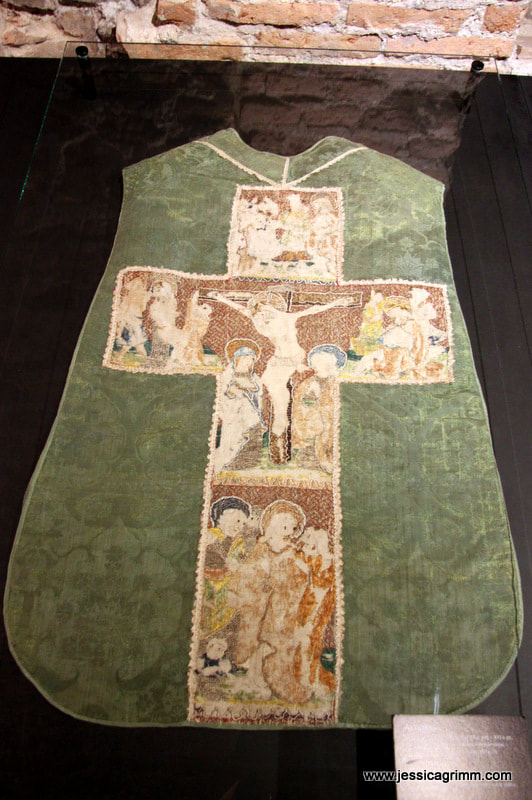
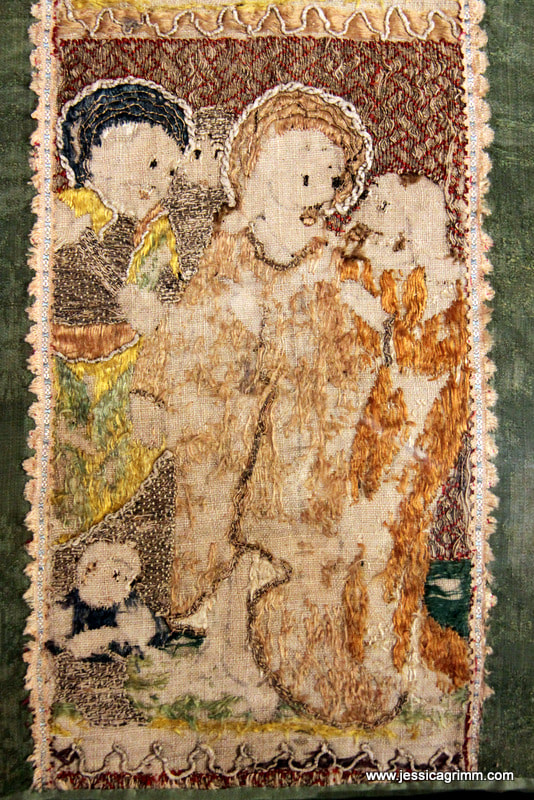
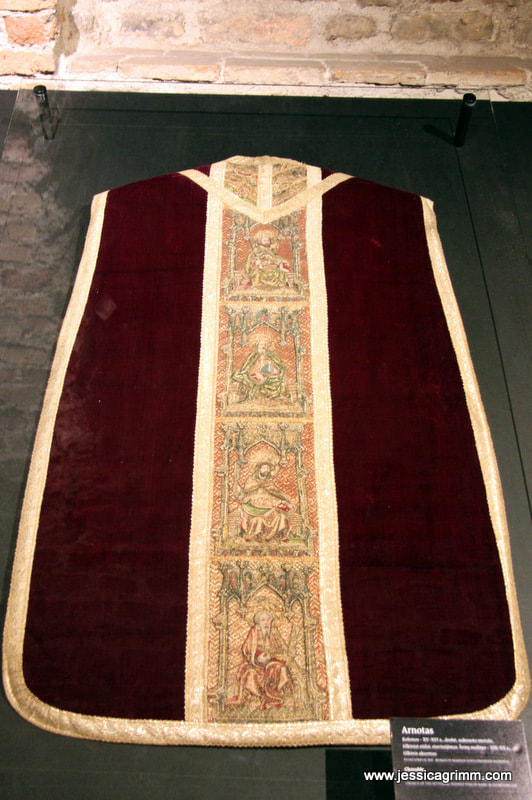
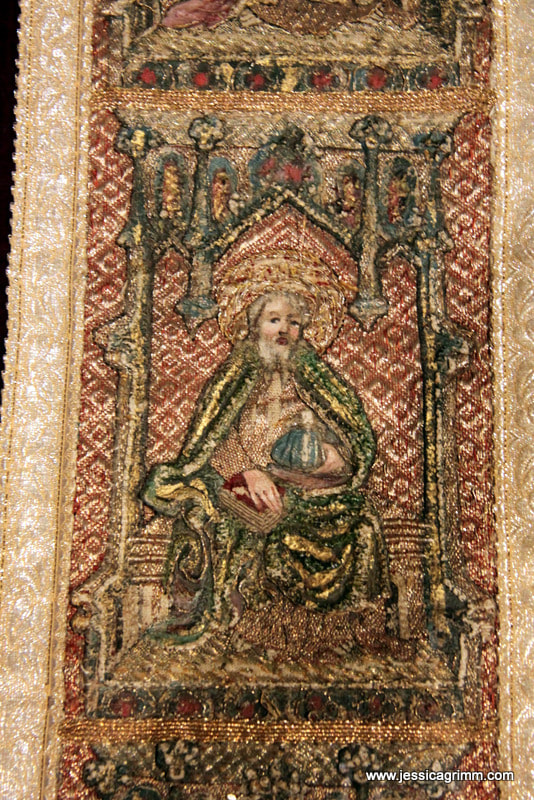
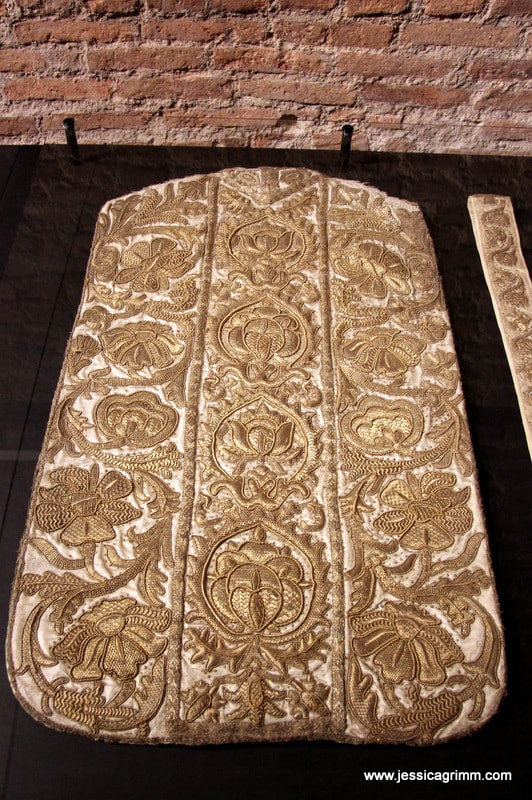
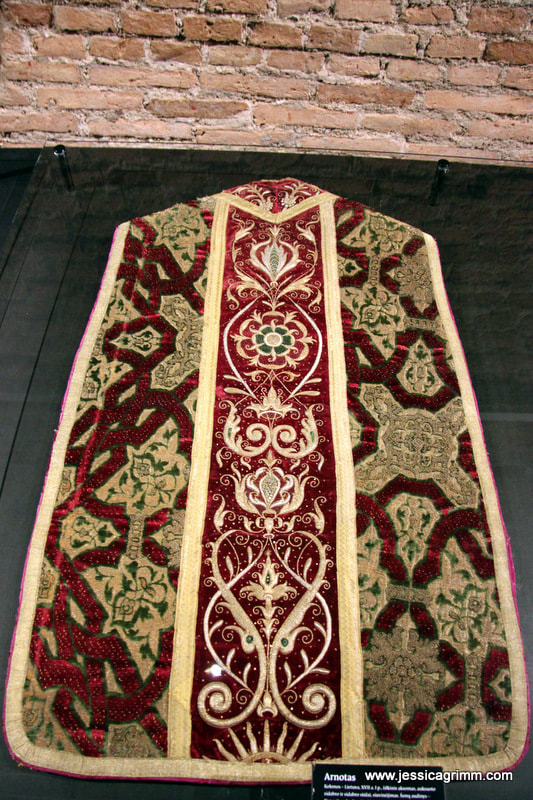
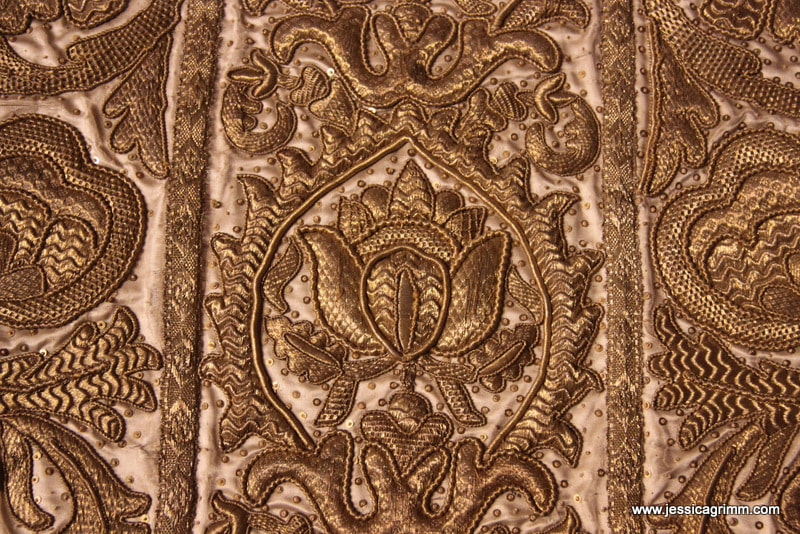
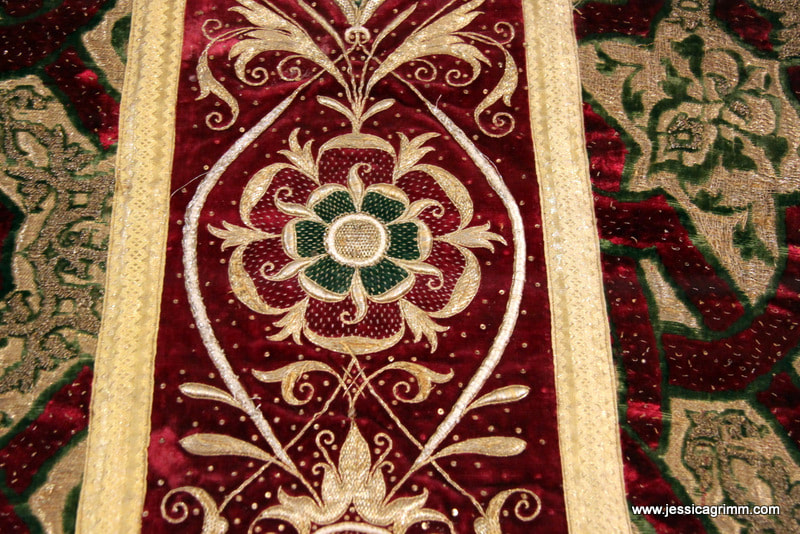
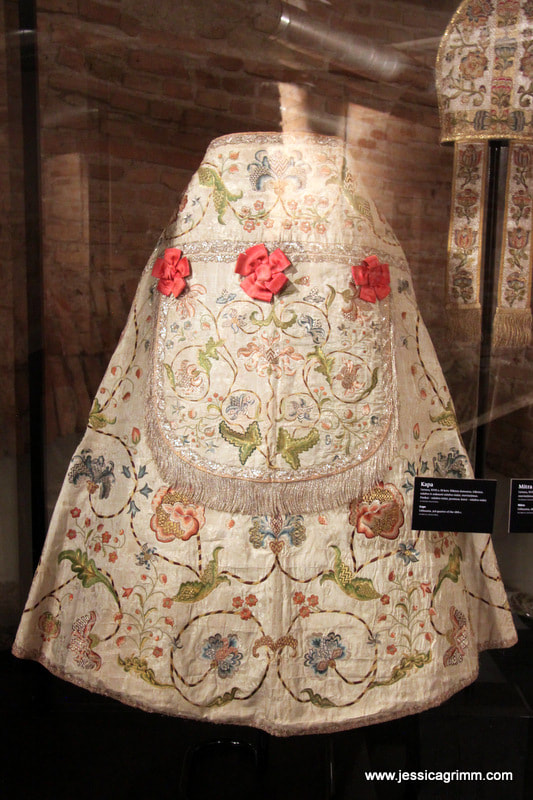
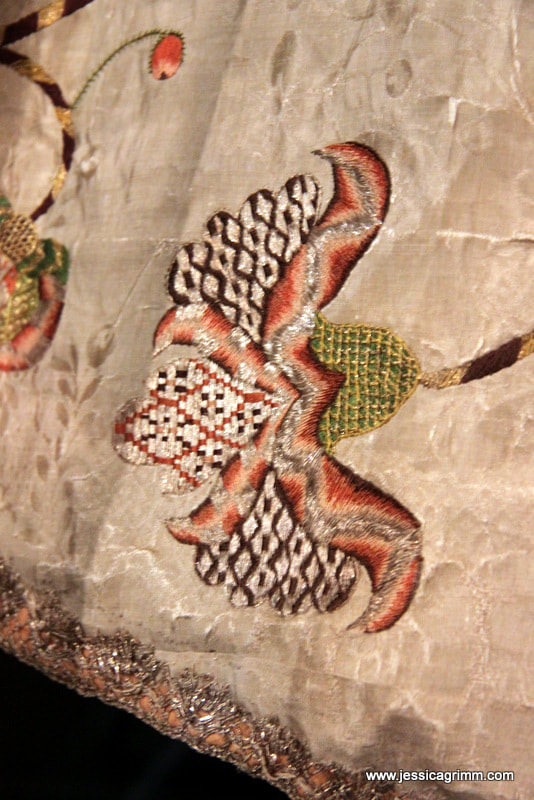
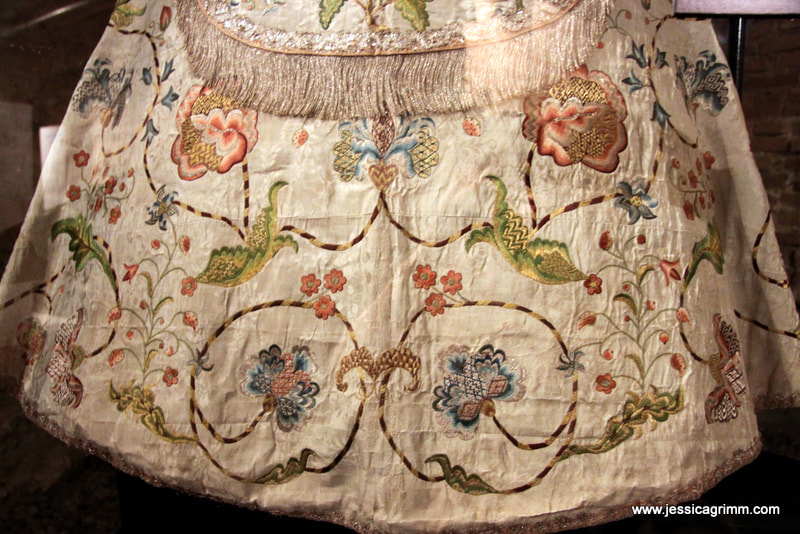
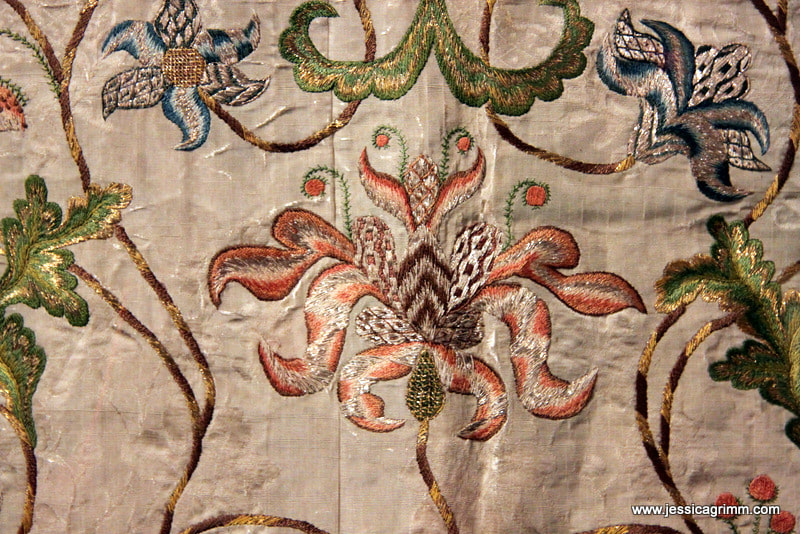
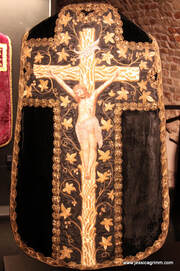
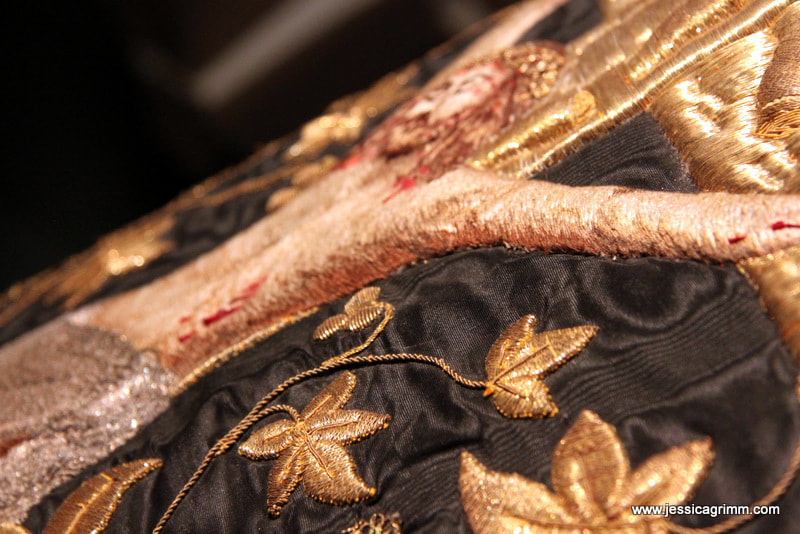
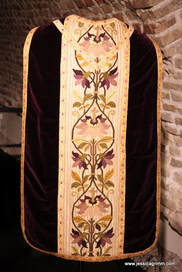
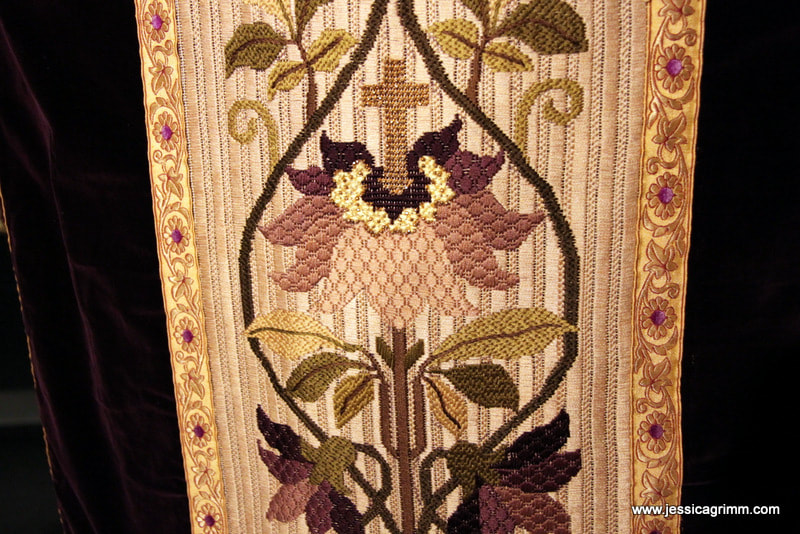
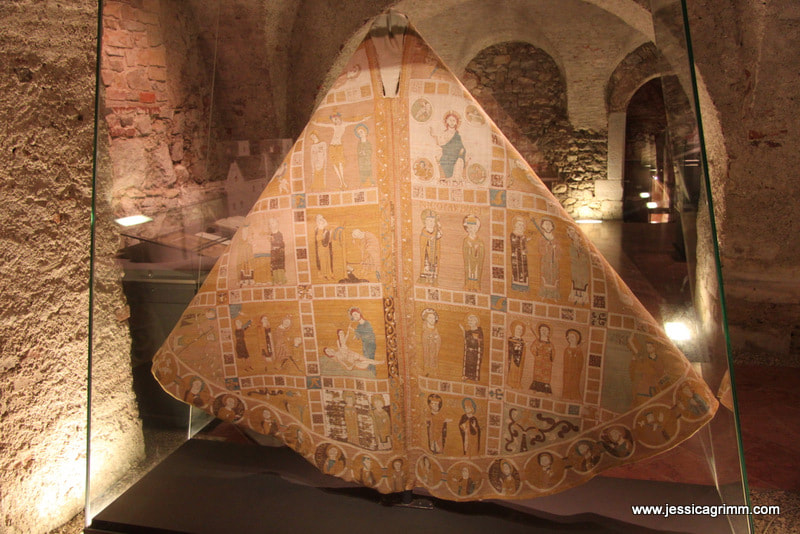
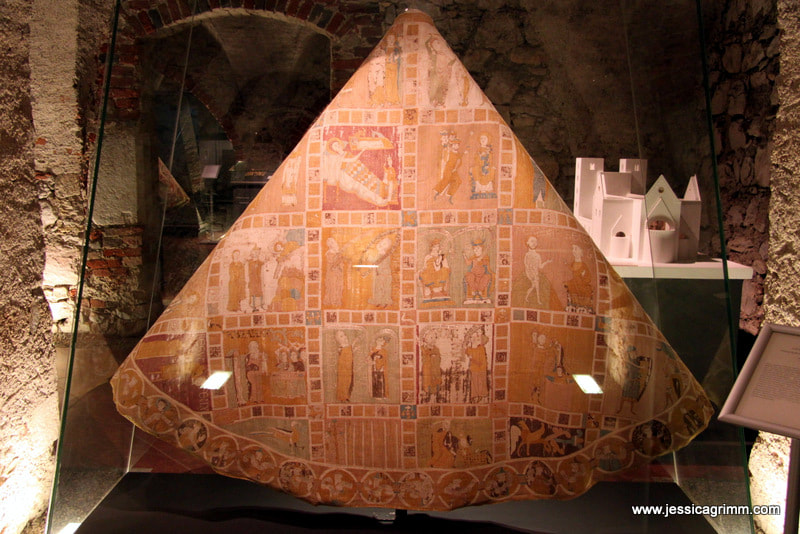
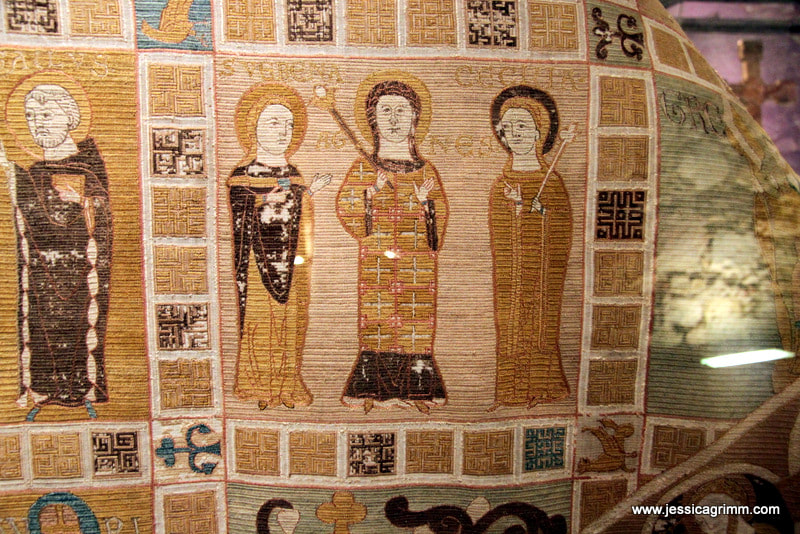
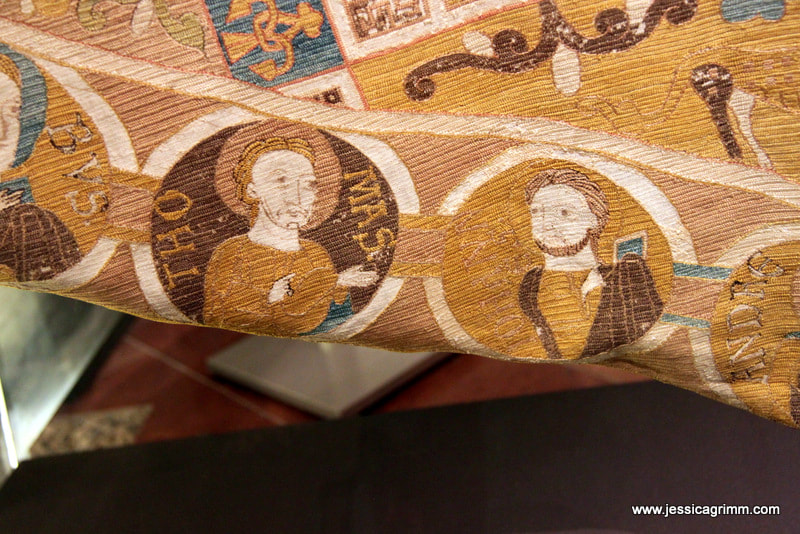
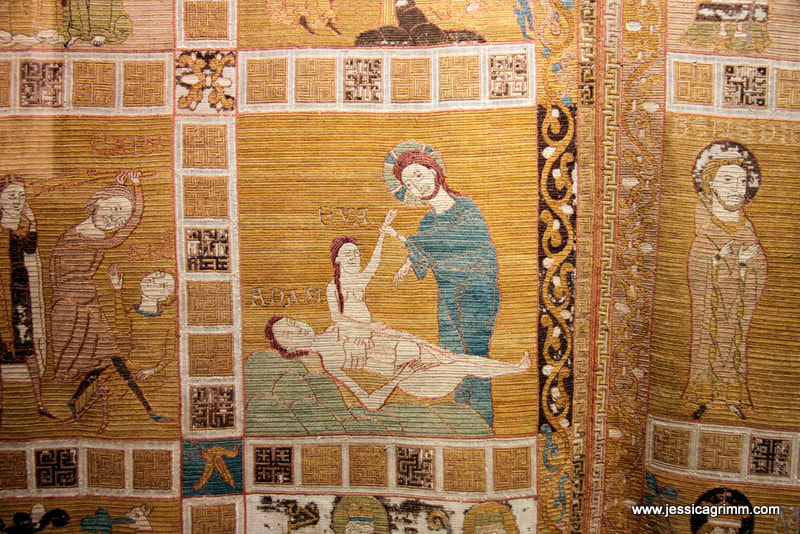
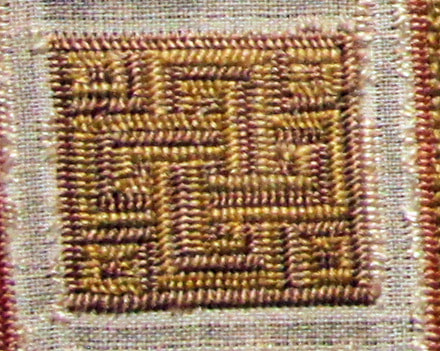
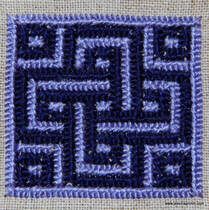
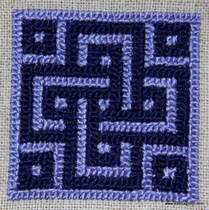
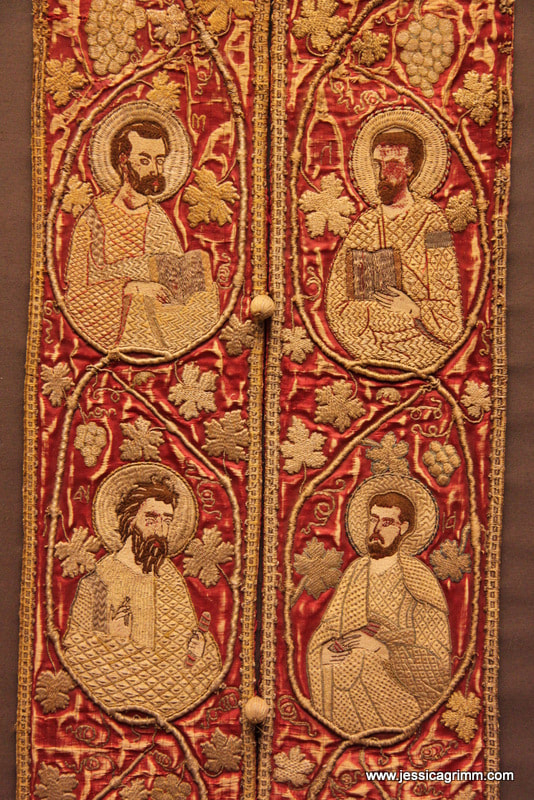
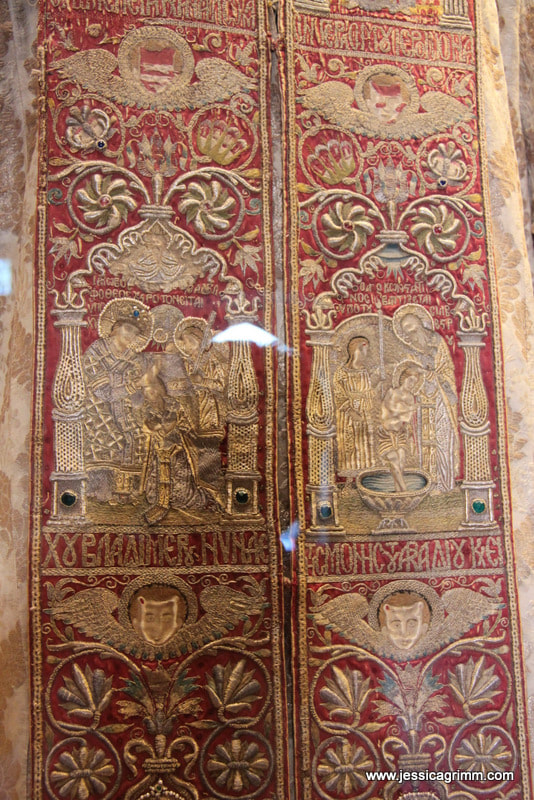
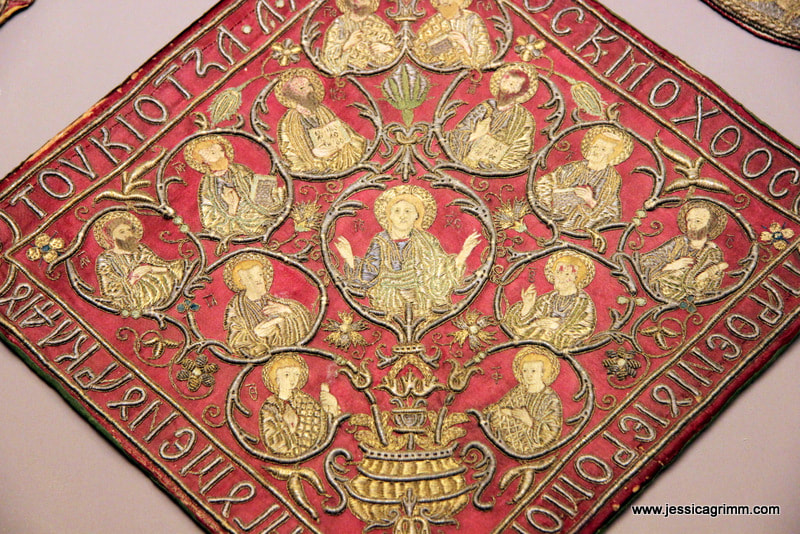
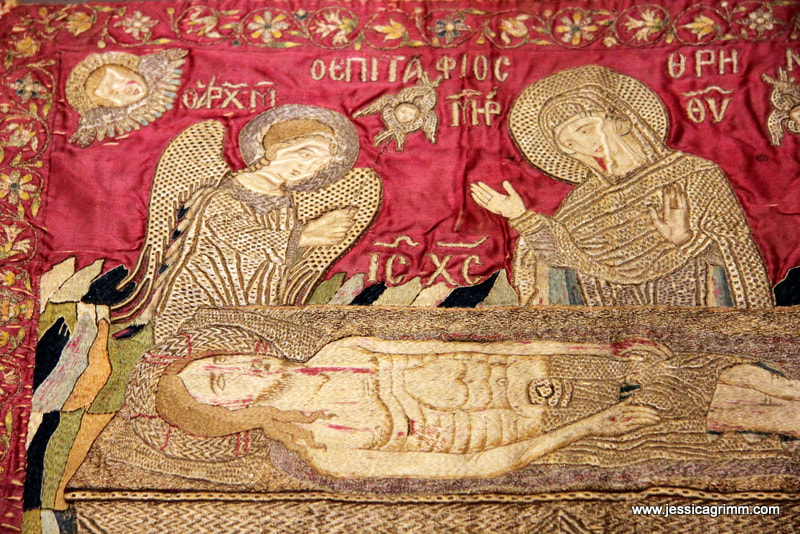
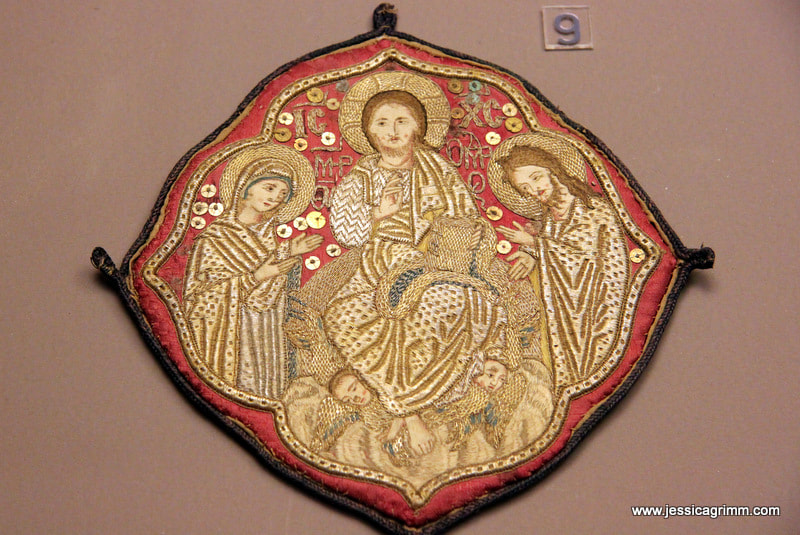
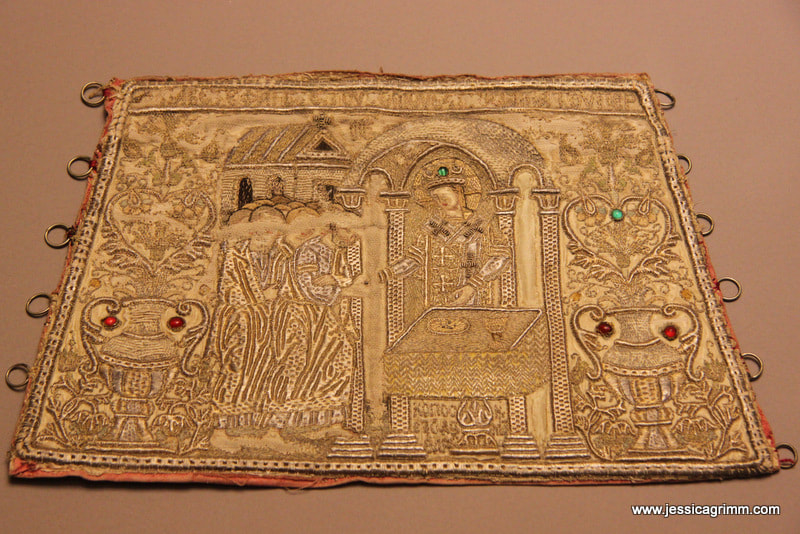
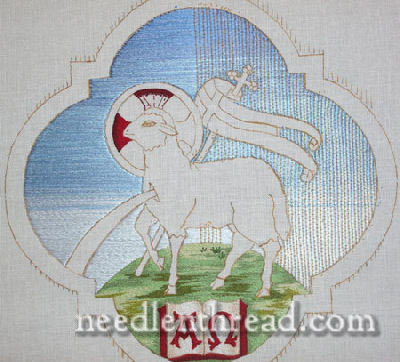
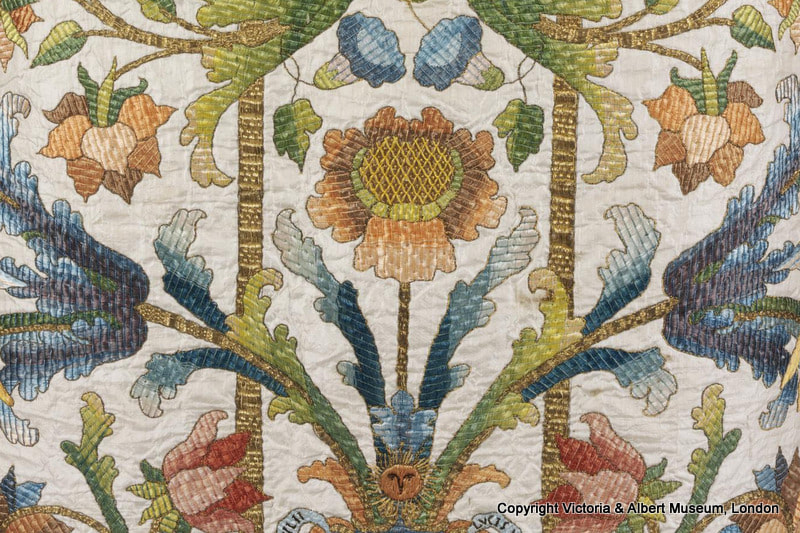
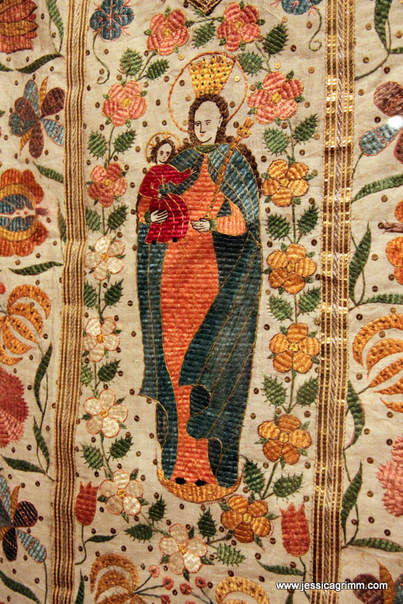
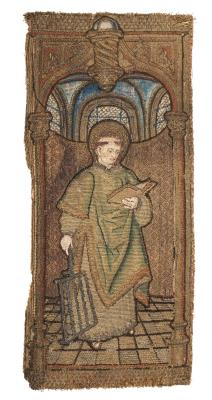
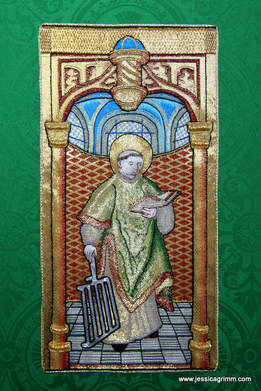
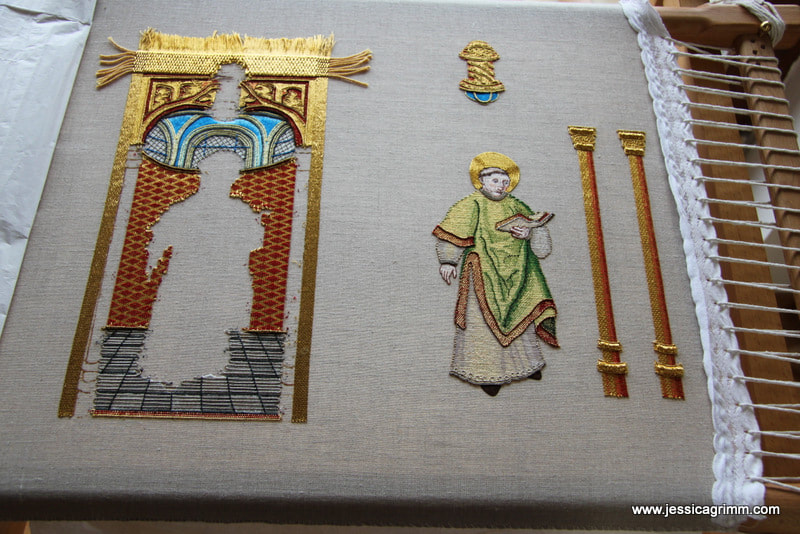
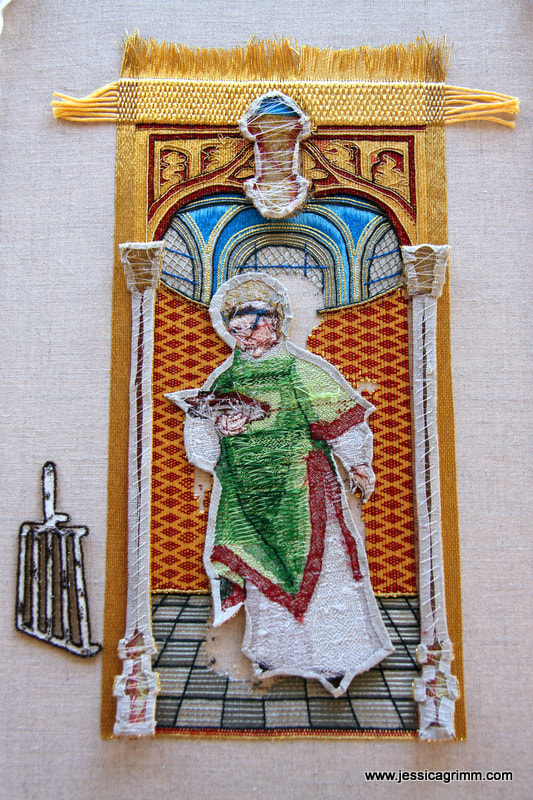
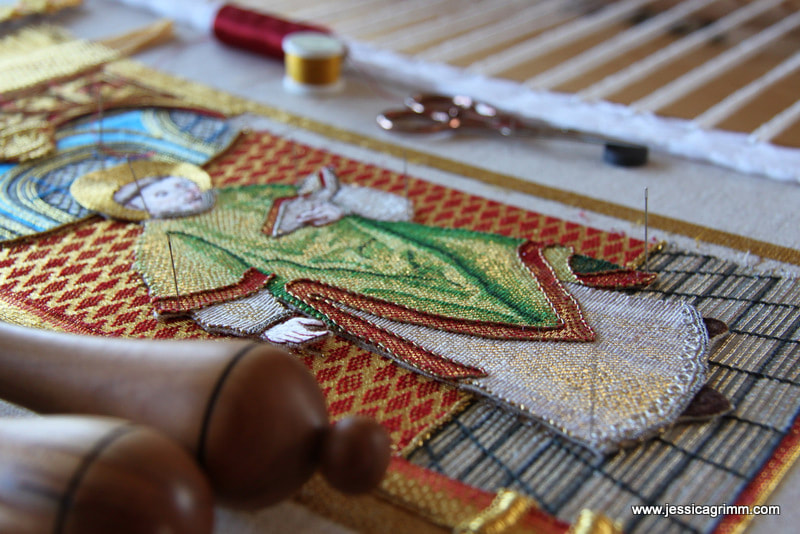
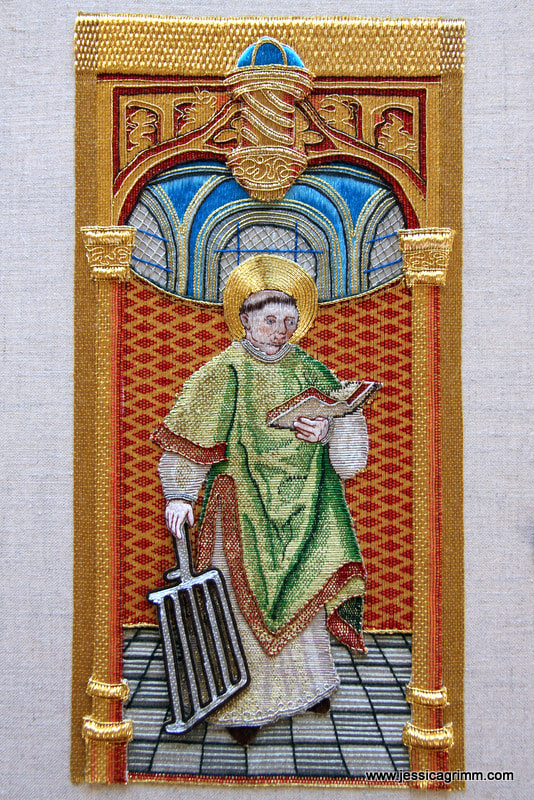
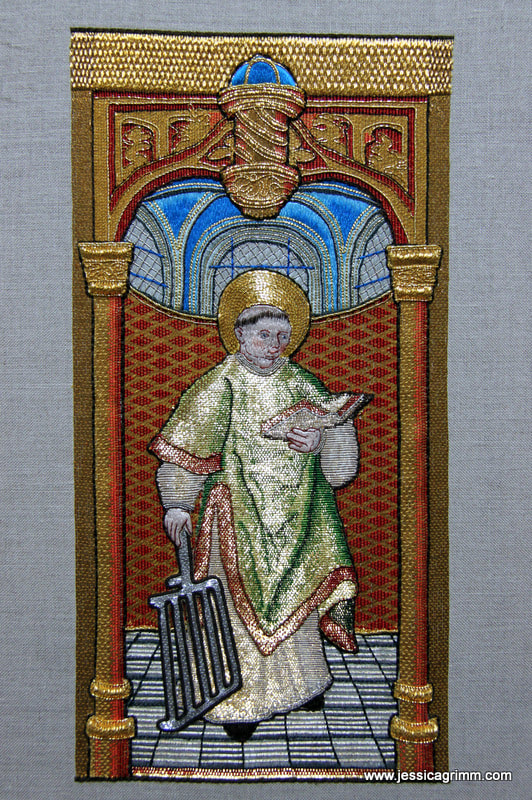
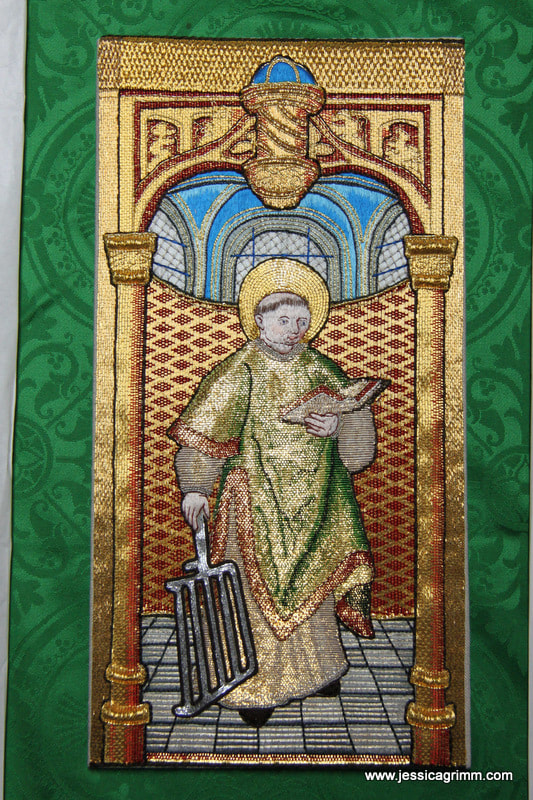
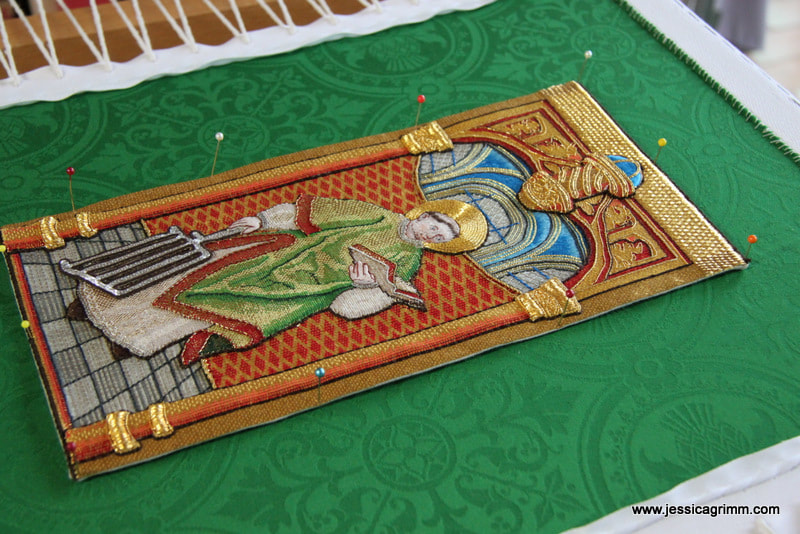
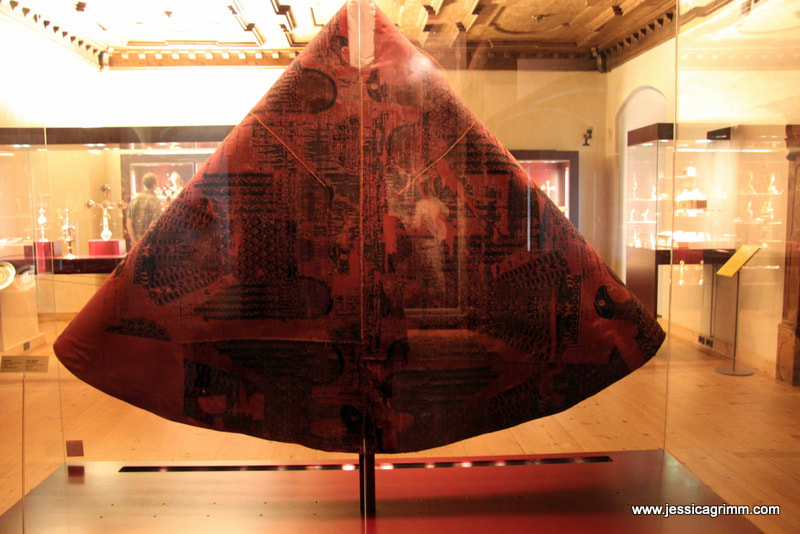
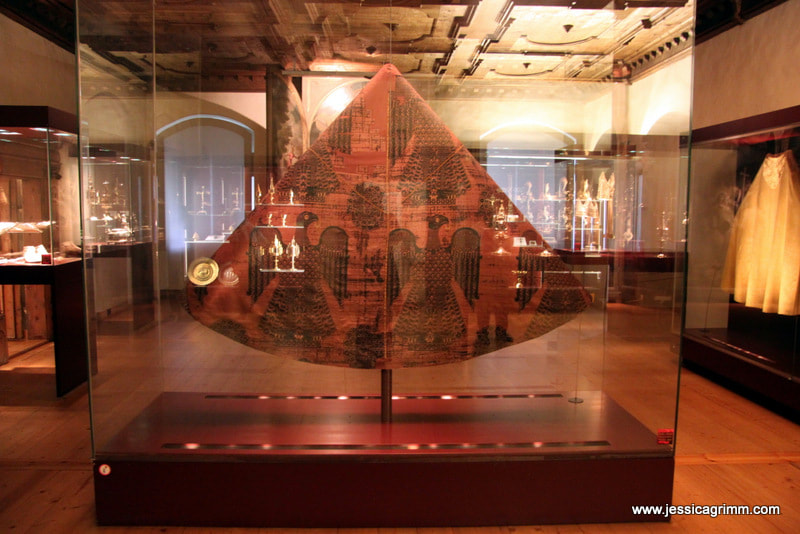
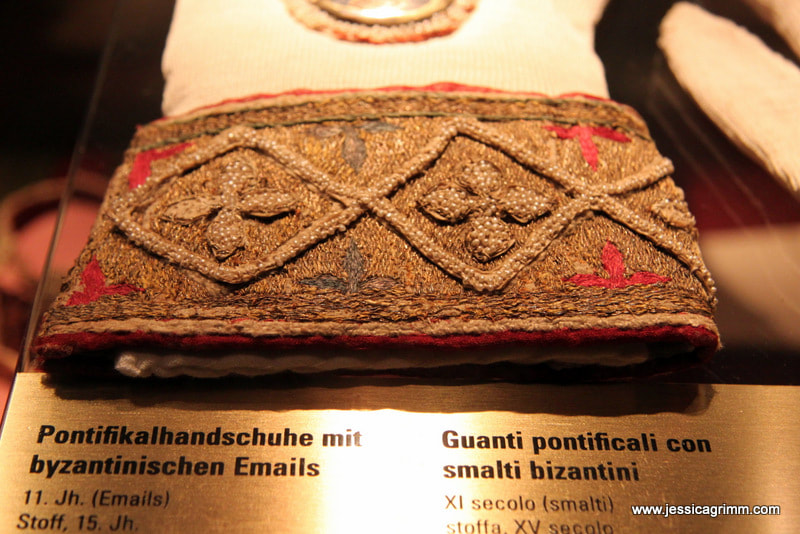
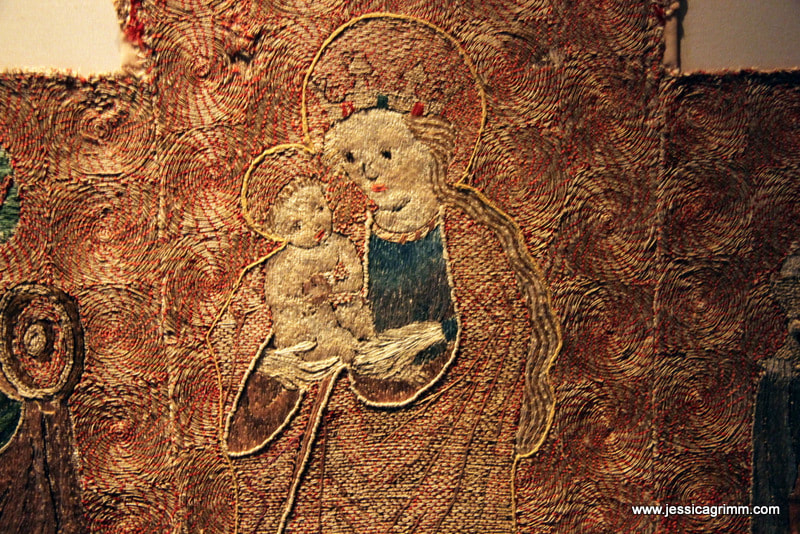
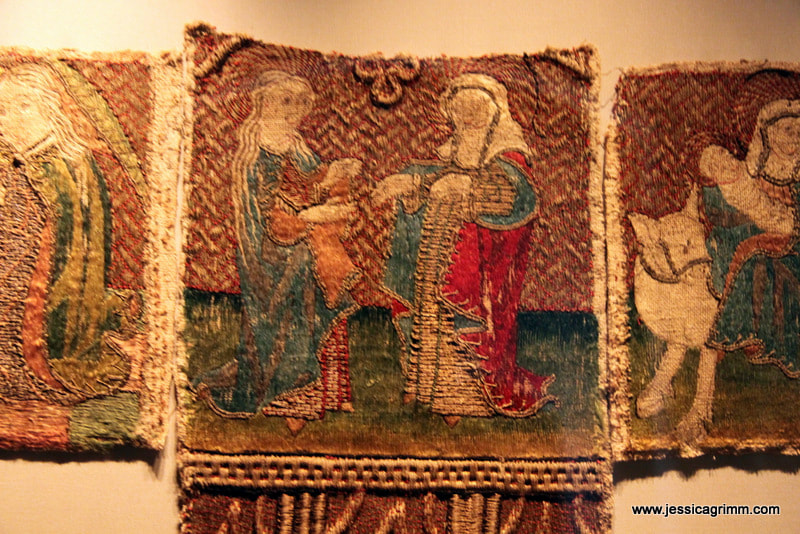
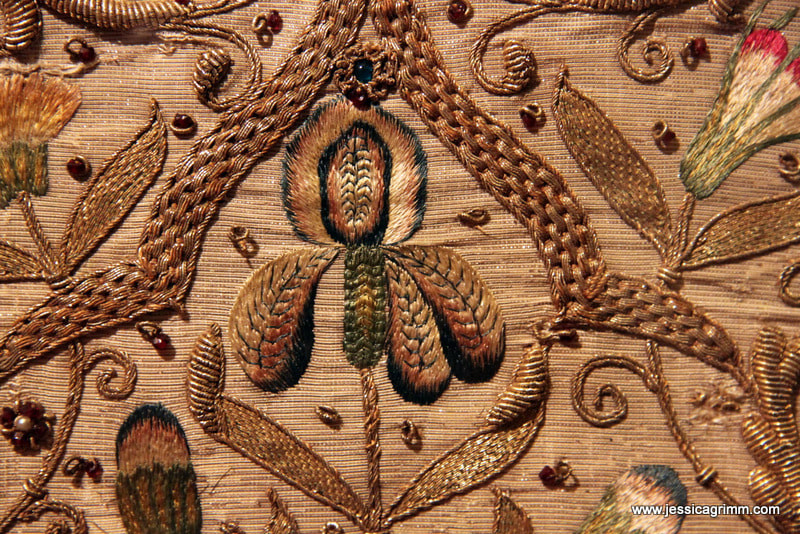
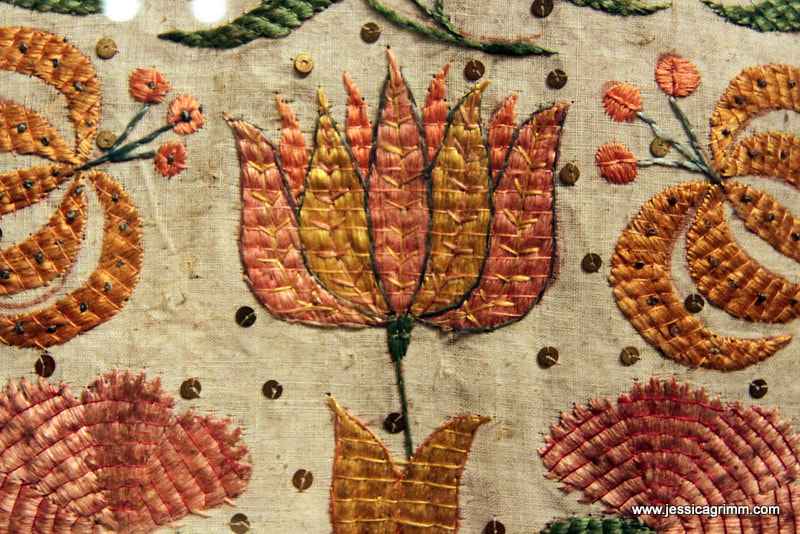
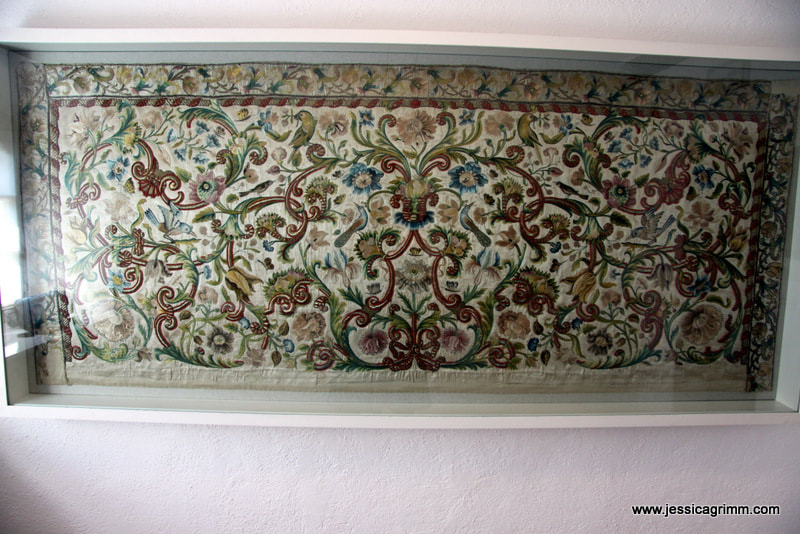
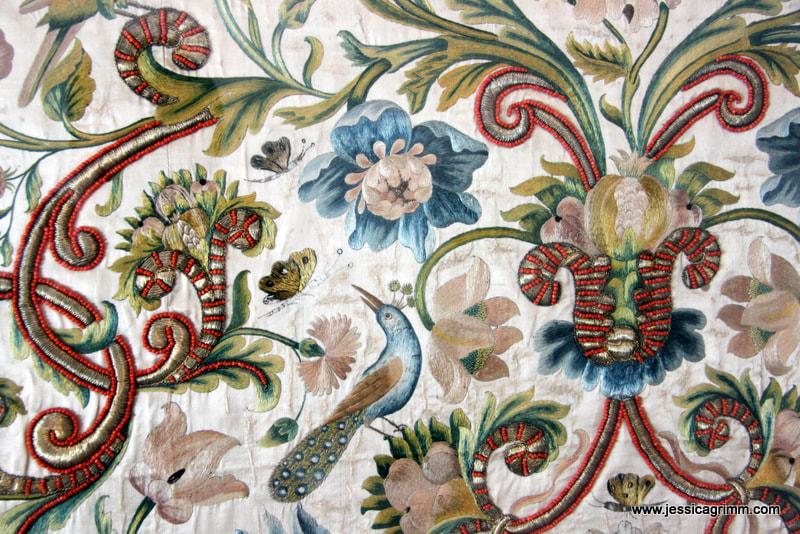
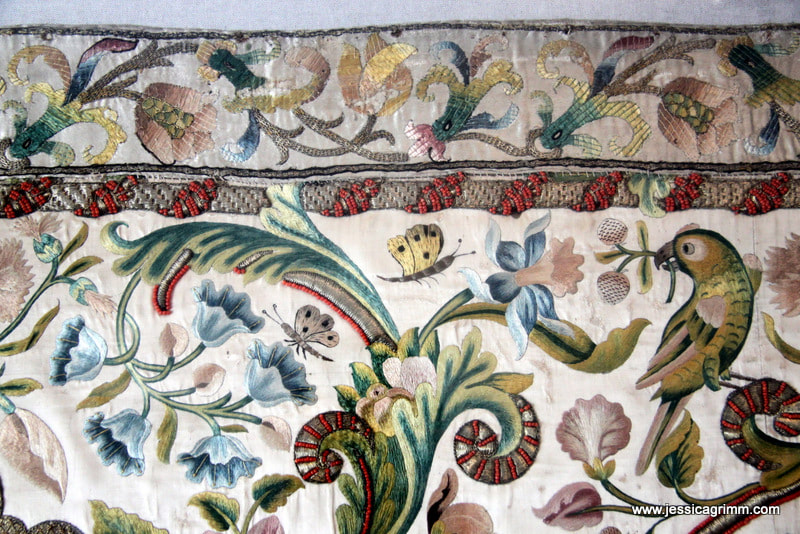
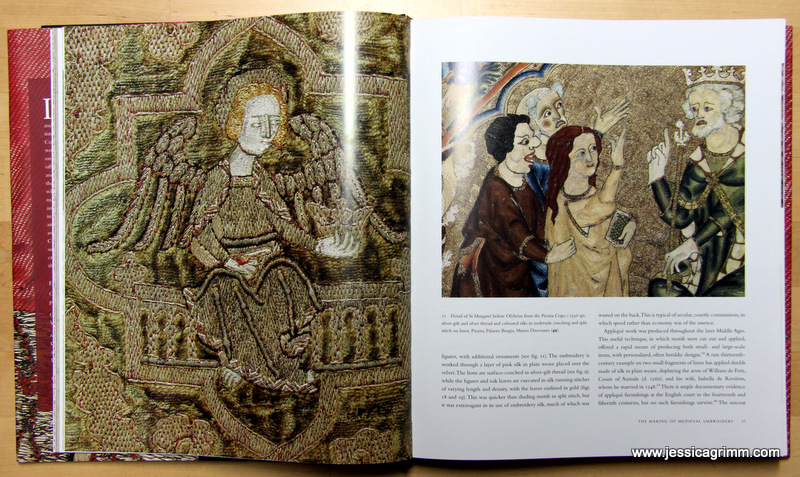
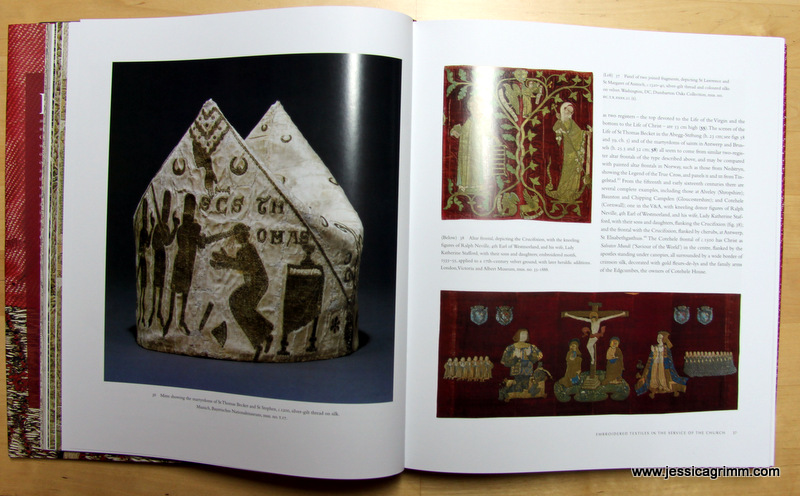
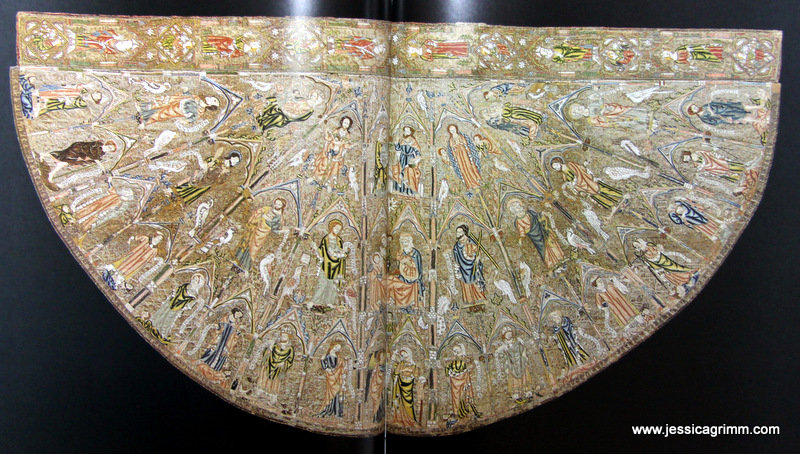
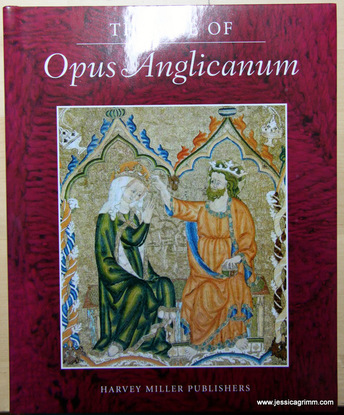
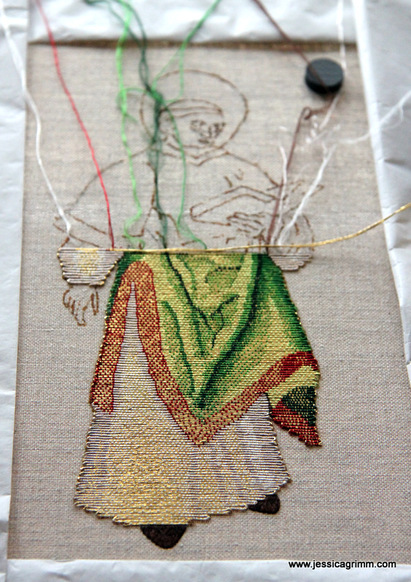
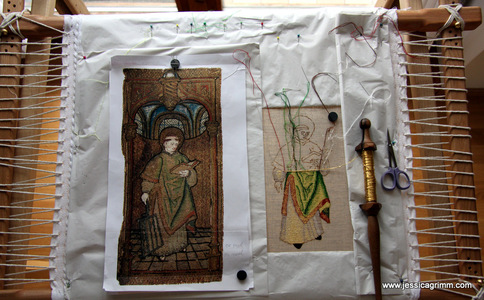
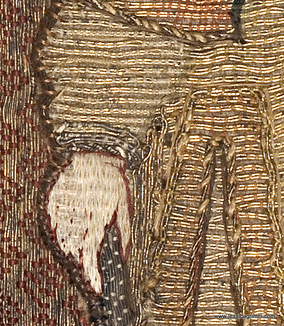





 RSS Feed
RSS Feed